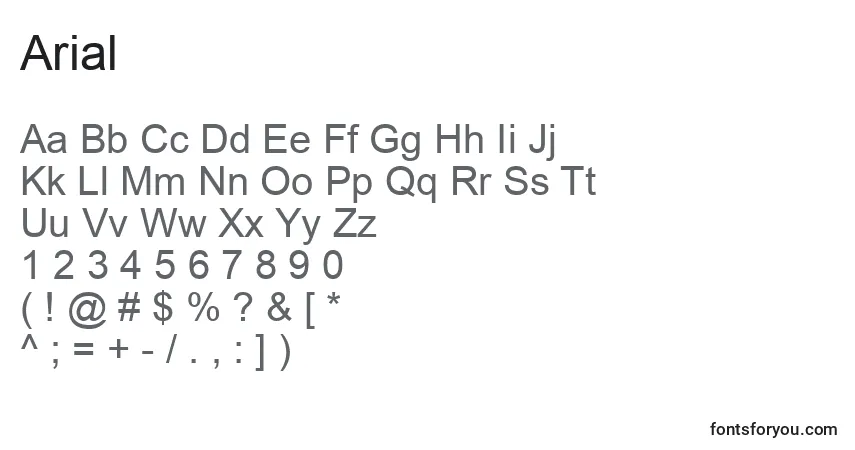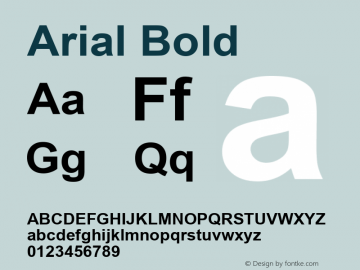

The dimensions of the em square typically are those of the full body height of a font plus some extra spacing to prevent lines of text from colliding when typeset without extra leading. An FUnit is the smallest measurable unit in the em square, an imaginary square that is used to size and align glyphs. In a TrueType font file point locations are described in font units, or FUnits. The direction of the curves has to be such that, if the curve is followed in the direction of increasing point numbers, the black space (the filled area) will always be to the right. It makes a difference whether the order is increasing or decreasing in determining the fill pattern of the shapes that make up the glyph. The points that make up a curve must be numbered in consecutive order.
#Arial font glyphs series#
Figure 1-2 A glyph description consisting of a series of on and off curve points Straight lines are defined by two consecutive on curve points. Any combination of off and on curve points is acceptable when defining a curve. The TrueType Bezierspline format uses two types of points to define curves, those that are on the curve and those that are off the curve. Curves are defined by a series of points that describe second order Bezier-splines. Figure 1-1 Glyphs with one, two, three contours respectivelyĬontours are composed of straight lines and curves. Certain control characters that have no visible manifestation will map to the glyph with no contours. Composite glyphs can be constructed by combining two or more simpler glyphs. More complex glyphs can have two or more contours. A simple glyph may have only one contour. A glyph outline consists of a series of contours. In a TrueType font, glyph shapes are described by their outlines. It also documents the placement of glyphs with respect to the coordinate axes. This section describes the coordinate system used to establish the locations of the points that define a glyph outline. Scan converter decides which pixels to turn on.Interpreter executes instructions associated with glyph “B” and grid-fits.Scaler converts FUnits to pixel coordinates and scales outline to size requested by application.Digitize outline with FUnit coordinates in TrueType font file.This outline is then scan converted to produce a bitmap that can be rendered on the target device. The result of carrying out the instructions is a grid-fitted outline for the requested glyph. Next, the instructions associated with this glyph are carried out by the interpreter. Once scaled, the points that make up the outline are no longer recorded in the FUnits used to describe the original outline, but have become device-specific pixel coordinates. This section describes the process that allows glyphs from a TrueType font file to be displayed on raster devices.įirst, the outline stored in the font file is scaled to the requested size. Whatever the case, it is necessary to create a TrueType font file that, among other things, describes each glyph in the font as an outline in the TrueType format. TrueType fonts can also be obtained by converting fonts from other formats. From design to font fileĪ TrueType font can originate as a new design drawn on paper or created on a computer screen. In the remainder of this chapter, “TrueType font” will be used to mean OpenType fonts that have TrueType glyph outlines. This chapter includes an introduction to TrueType instructions and how they are interpreted. It begins with an overview of the steps involved in taking a design from paper to the creation of a bitmap that can be sent to an output device and follows with a closer look at each of the steps in the process. This chapter introduces the basic concepts needed to create and instruct an OpenType font that contains TrueType outline data.

In particular, the TrueType instruction set provides a powerful means of controlling glyph outlines at all or specific sizes and resolutions. When outlines are rasterized, TrueType “hinting” instructions contained in a font can be used to refine the rasterized results. OpenType supports the TrueType glyph outline format, in which a glyph outline is described as second-order Bezier splines.


 0 kommentar(er)
0 kommentar(er)
